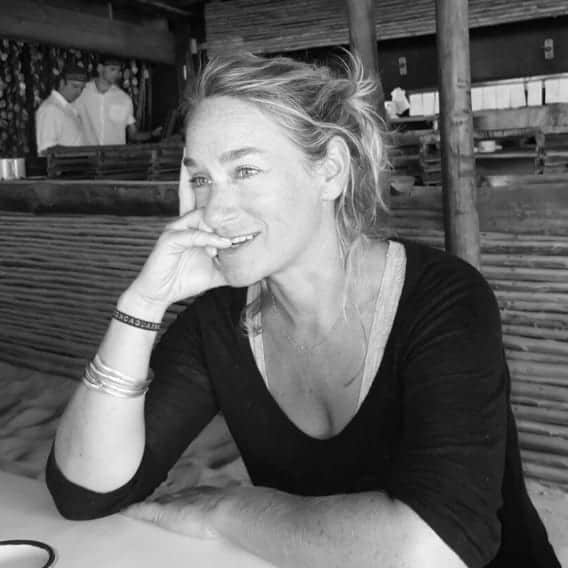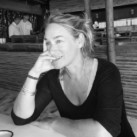
Mariya Javed-Payne, MSW, LICSW, LADC, is a somatic psychotherapist specializing in healing trauma, addiction, and generational and racial wounds. Born in India and enriched by early experiences in France, Brazil, and the United States, she brings a multicultural perspective to her practice. Drawing on her personal journey through recovery and chronic health challenges, Mariya is dedicated to fostering holistic change and nurturing authentic healing in individuals and communities. MysticMag offers you an exclusive interview.
As a somatic psychotherapist, you utilize brain and body-based approaches such as Brainspotting to heal traumas. Could you explain how Brainspotting works and its effectiveness in restoring one’s capacity to be their best, unique self?
Brainspotting is a somatic-based psychotherapy that uses a bottom-up approach. Whereas talk therapies utilize a top-down approach, Brainspotting accesses the somatic activation related to issues, which travel up from the peripheral nervous system (in the body) into the spine and then the brain stem/midbrain.
The midbrain houses the limbic system where our survival responses, traumas, emotions, memories, and motor coordination (in order to respond to threats and safety) are held.
The midbrain processing of trauma is crucial as it is the site where traumas and a variety of emotional and physical conditions are held.
The neocortex (frontal lobe), is the newest part of our brain and is the site of rational thought, linear processes, critical thinking, logic, sequencing, language, and judgment. The neocortex has little to do with regulating emotions while the limbic system and midbrain plays a crucial role in regulating emotions. So in reality, talk therapy has been doing it backwards the whole time and why it’s not effective for many people.
A brainspot is an eye position that correlates to a subcortical area of relevance, which can be found in the brain, and is elicited by bringing up a topic and its correlating somatic activation (how one senses what they’re thinking/feeling/experiencing in their body).
Once a brainspot has been located using a variety of techniques by a trained Brainspotting practitioner, the client is guided to keep their gaze on the brainspot/eye position, so that the brain can begin a self-scanning process. Focusing on this eye position allows the brain’s self-scanning capacity to engage in accessing the neural networks that are holding the somatic material/information that the client is wanting to work on. Once found and held, the brain can basically say “oh hey, here’s the location of this issue we have been dealing with for so long! Here’s all that stuck survival energy that we’ve dissociated from or had to avoid!” It then can engage its homeostatic capacity to discharge the held survival energy.
Clients will often feel sensations in the body, different emotions, and releases in a wave-like pattern as the nervous system works to rewire and reorganize itself. Brainspotting is a powerful form of memory reconsolidation that centers attunement and the innate healing capacity within each person’s brain and body and autonomic nervous system. It is the best trauma healing modality that I have encountered (I’ve studied most of them) and it is the primary tool I use in my practice.
Your practice emphasizes the importance of moving from a state of unsettledness to equilibrium through connection and relationship. Can you elaborate on how this process facilitates healing in individuals experiencing stress, trauma, or illness?
Human attachment and connection is the foundation of all healing in the human world. I believe in it from a neurophysiological perspective- that we are social beings and are physiologically hardwired for connection. I also believe in it from an animist perspective- that we are all intricately connected with one another and all life. When we are experiencing distress, trauma, or illness, the power of connection, and furthermore, our awareness of our own presence can deepen the healing. As a trauma therapist, I have worked for years in healing my own wounds and practicing my ability to be whole-heartedly present, attentive, caring, and holding space for other people. The ability to offer this presence- our attunement, is the most powerful medicine we have to give.
You offer therapy intensives that focus on delving deep into the historical roots of a client’s issues. What does a typical therapy intensive entail, and how do you determine if this approach is suitable for a particular client?
Most of the clients I work with have tried it al l- they’ve tried talk therapy, weekly therapy, hourly therapy and not been able to get clear of their struggles. In an intensive, we go for the roots and we are not limited by time to address those deeply entrenched patterns, traumas, and emotions. Clients come and work with me from all over the country for upwards of a week and we spend 4-6 hours a day in deep processing and somatic work, utilizing tools like Brainspotting, breathwork, shamanic healing, energy work, and psychedelic assisted therapy. This work is not for the faint of heart, it’s for people who are ready to meet themselves and their shadow in a profound way. Clients who are ready for change and know that spreading therapy out week after week is going to take too long can really benefit from putting their full attention on themselves for a period of time, without other distractions. It’s an honor to journey alongside folks through this deep and transformational container that we co-create together.
In addition to your private practice, you serve as an International Brainspotting trainer, teaching practitioners how to use Brainspotting therapy. How do you balance these roles, and what insights have you gained from this role?
Being a trainer, speaker, and educator has been one of the most rewarding experiences of my life and also comes with its challenges! The saying goes- if you want to learn something, teach it, right? Having the honor and privilege to share deep trauma healing methods like Brainspotting in a context of liberation and decolonization is aligned with who I am as an innovator and guide. Helping to change the paradigm of how the West does mental healthcare is part of my mission and has forced me to face major fears of being seen and ancestral wounds of not being allowed to have a voice. As a deeply sensitive person, supporting large groups and retreats has taught me a lot about how to move my energy, how to create containers where people can come together in a shared community from all walks of life. With all the polarity and division we are currently seeing in the world, this feels like a sacred act, but one that is also arduous-especially when you throw trauma in the mix. I am learning to use my voice, to center compassion and humanity in all of it, and am grateful for the opportunity to be of service and be a part of the ushering in of new ways of being that are more peaceful, loving, and connected than the world we’ve lived in so far. I listen and learn from nature and Mother Earth herself to guide me in how to create spaces for healing- as she is a master creator and healer herself!
Your work includes a “Healing Vault” with various resources to support individuals on their healing path or professional journey. How do you curate these materials, and what role do they play in complementing the therapeutic work you do with clients?
These materials have been collected over the years. Books that I’ve read, local practitioners that I’ve worked with and trust, and overall, general information for clients and the public. I am a big believer in community and in education, so having a dedicated space for resources is part of my mission. I am constantly learning new things (it’s my favorite thing to do), so it only feels right to share that with the community for the benefit of others.
If you would like to find out more about Awaken Consulting Services, please visit https://www.awakenconsultingservices.com/



